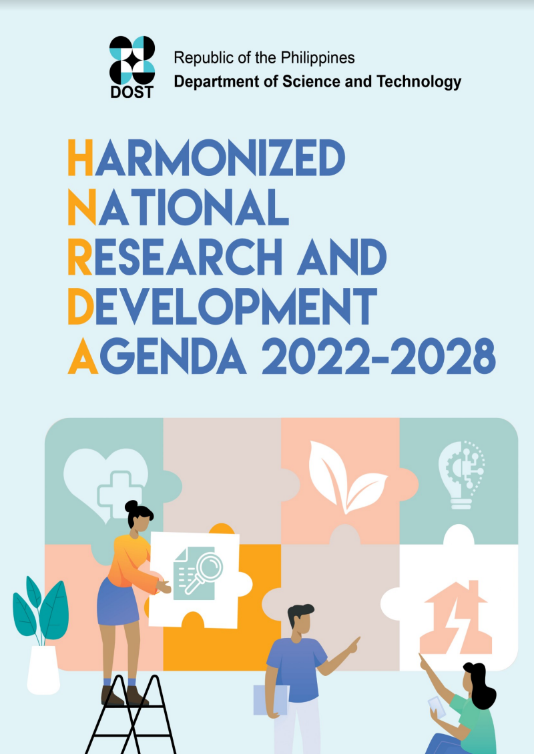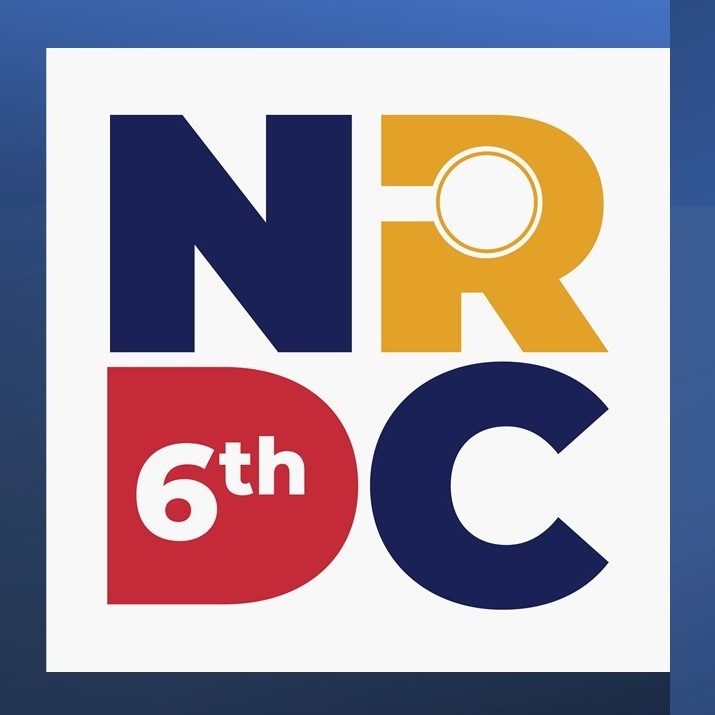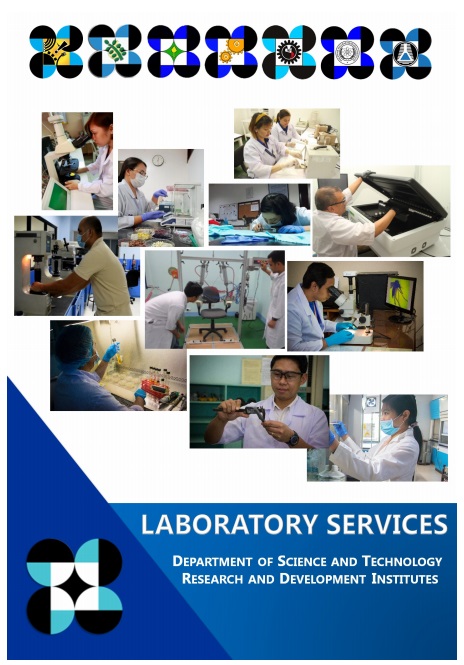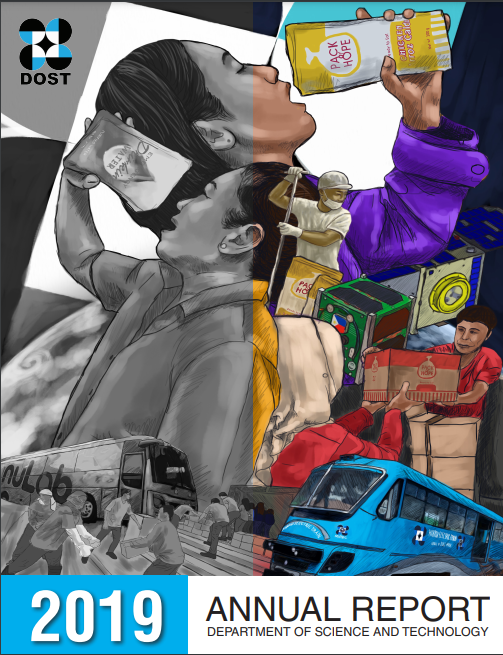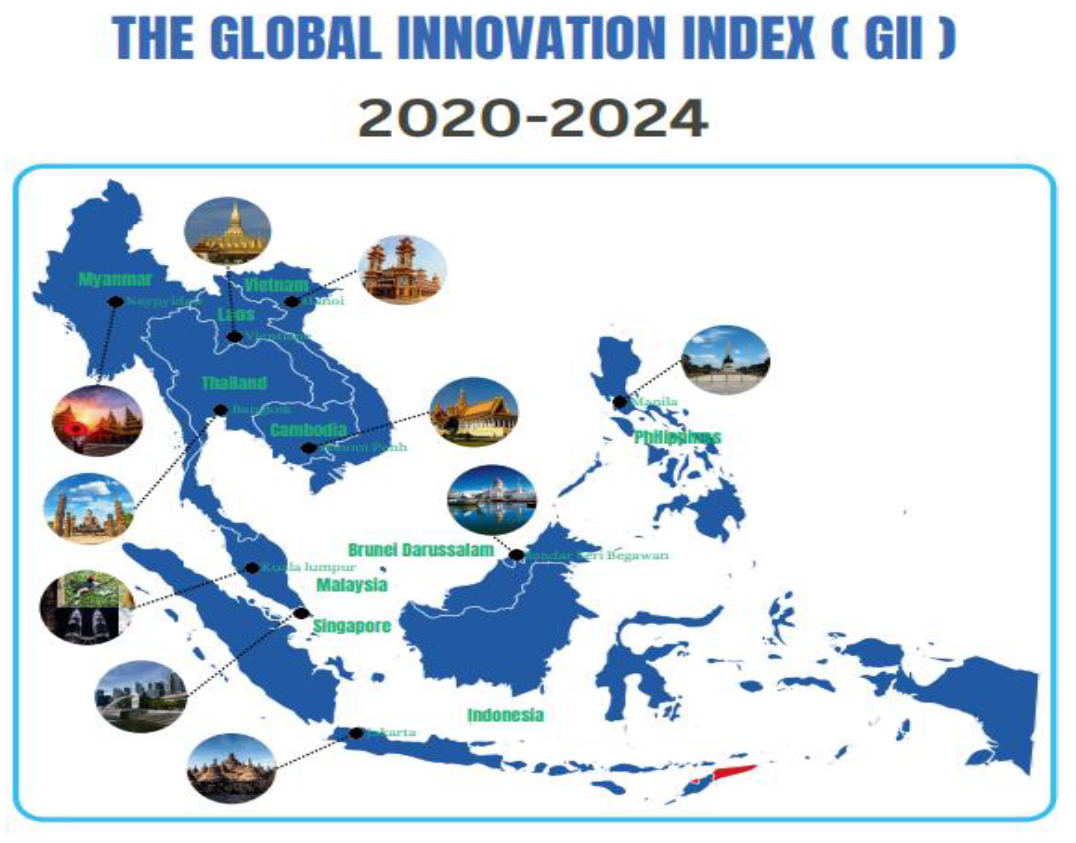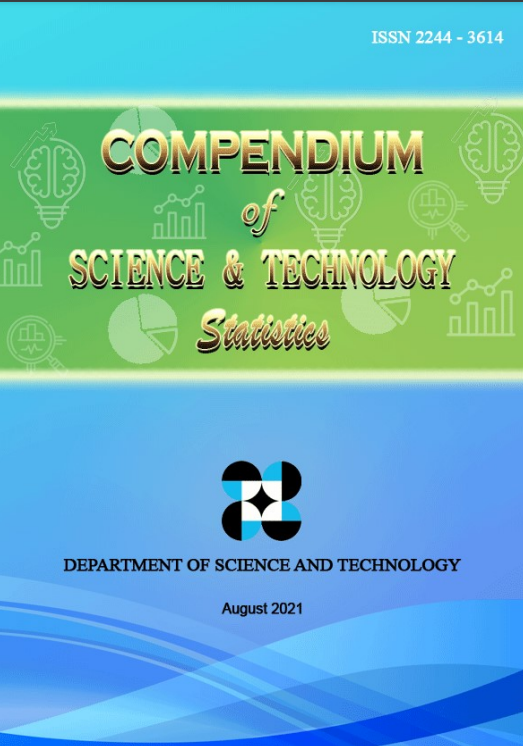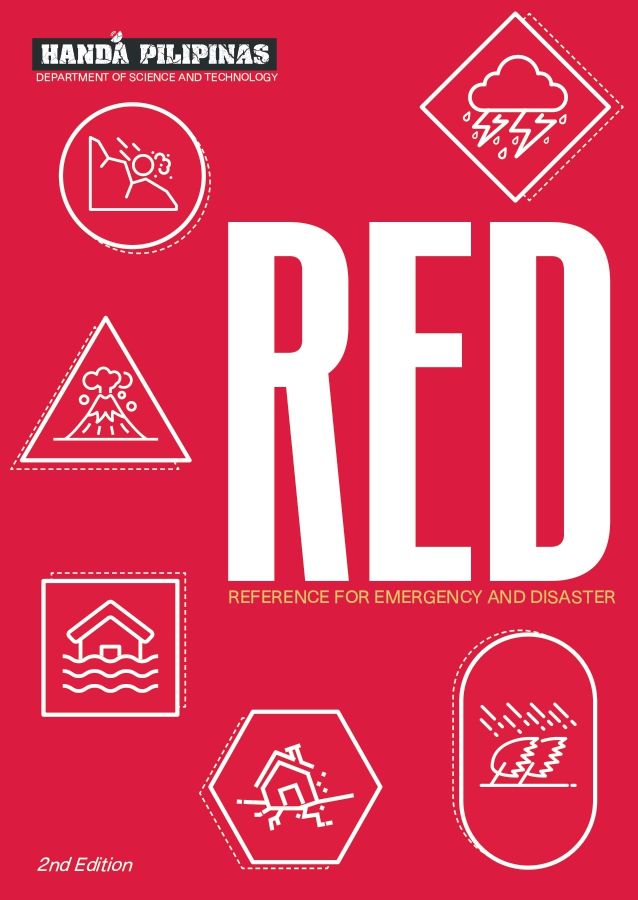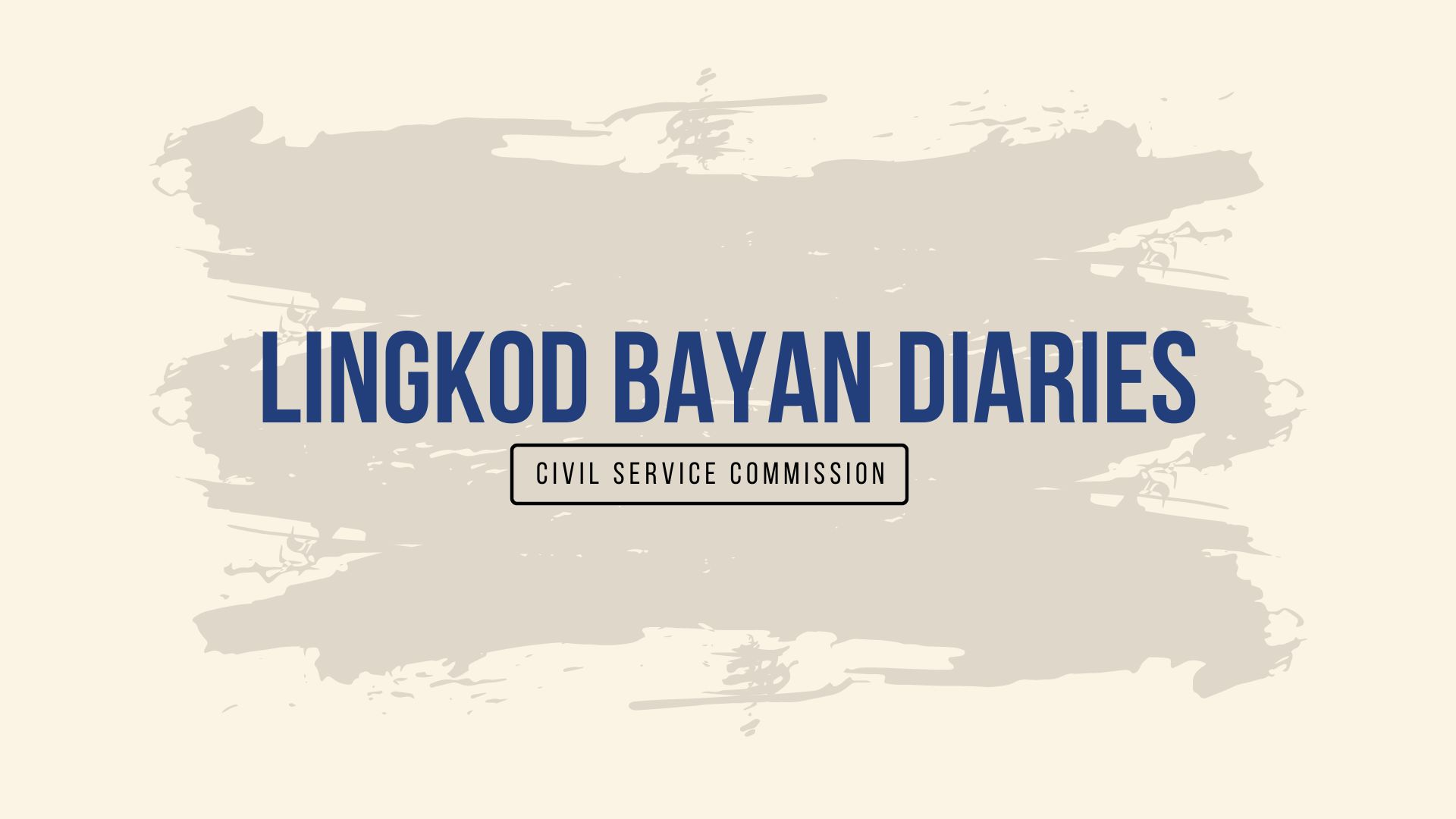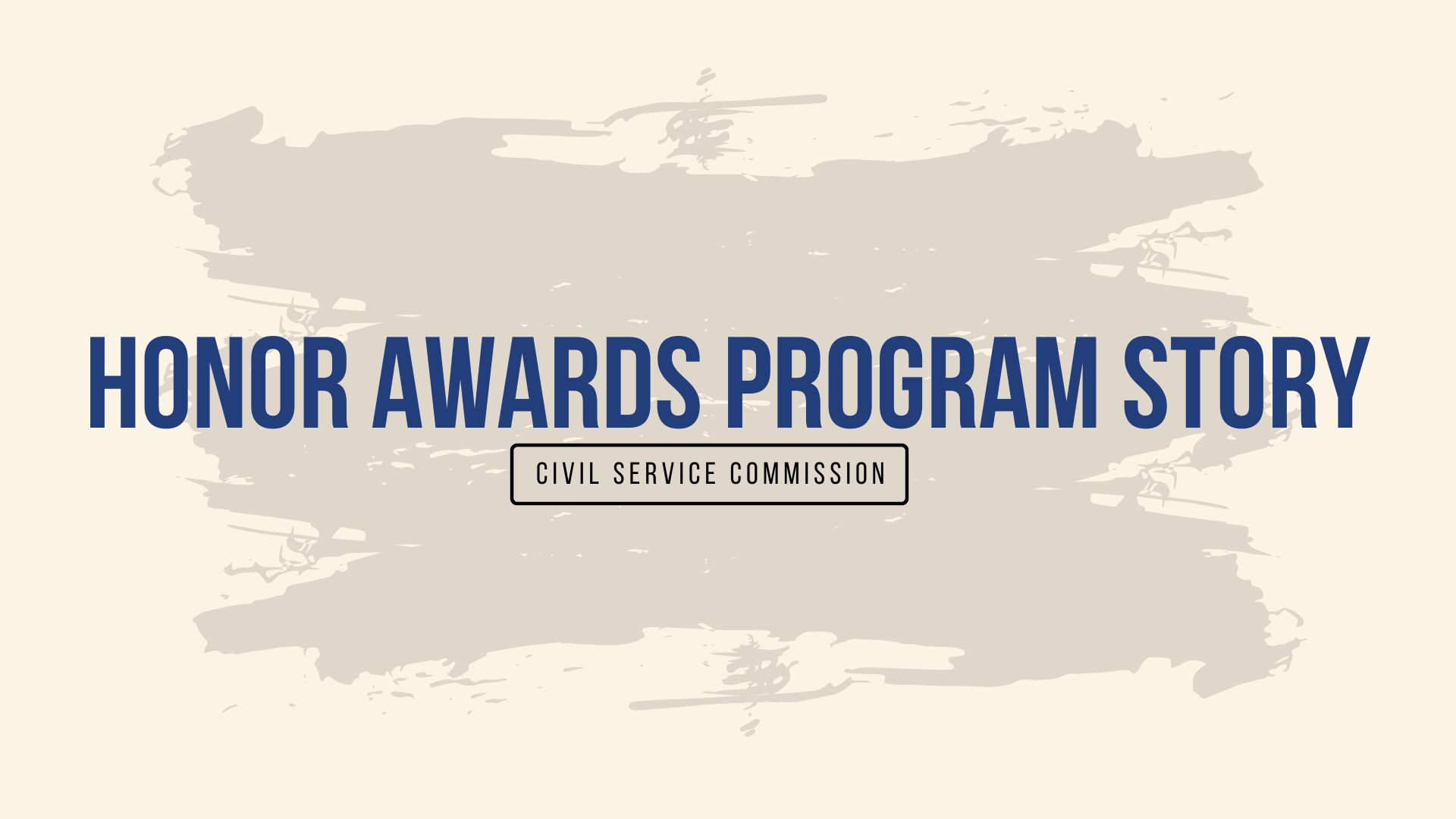DIET AND EXERCISE FOR HEALTH - DOST pitches for smarter living with Yeba and brown rice
- Details
- Hits: 4593
Day 4 of the Expo Science 2013 proved to be a sweat drenching but definitely a healthier day as it kicked off with a couple of aerobic exercise routines called the “Yeba exercises” at seven in the morning on July 26, 2013. This activity is part of the celebration of the National Science and Technology Week of the Department of Science and Technology (DOST) entitled, “Science, Technology and Innovation: The Road to a Smarter Philippines.”
Danny Vinculado, dance instructor choreographer Arts in the City in Bonifacio Global City, supervised the “Yeba exercises” and even introduced innovative routines that borrowed the moves of our native Ifugao dance.
Thereafter, Dr. Custer Deocaris, a Balik Scientist specializing in neuroscience gave a pep talk on how to stay healthy by eating the right food and exercising regularly.
In his talk, Dr. Deocaris introduced his 3 B’s of healthy living that stand for brainy, blissful and beautiful. He stressed that exercising for at least 30 minutes a day or equivalent to 10,000 steps can contribute to general well being of a person. “When a person engages in at least 30 minutes of exercise, he or she will eventually have a healthy brain, will find self-fulfillment or bliss and will be more beautiful,” said Dr. Deocaris.
Dr. Deocaris is currently doing research studies on stem cell in Japan and Korea.
The event was sponsored by Nestle Philippines, Wyeth Pharmaceuticals, Mondeliz Philippines (formerly Kraft Foods), Unilever Phils. and the Center for Culinary Arts or CCA, all advocates for healthy eating and lifestyle, and proper nutrition.
For more information on NSTW events, please log on to www.nstw.dost.gov.ph/nstw2013/.

Participants to the Expo Science 2013 of the Department of Science and Technology (DOST) woke up early last July 26, 2013 and joined in the “Yeba Exercises” conducted by dance instructor and fitness expert Danny Vinculado as part of the day’s celebration of Smarter Living, an advocacy being promoted by DOST and the Food and Nutrition Research Institute (FNRI). Thereafter a healthy breakfast was served and later on a cooking demonstration using brown rice was conducted by chefs from the Center forCulinary Arts. (Rodolfo P. de Guzman, S&T Media Service, DOST-STII)
DOST-Pisay studes showcase robotics, math magic and chem wonders
- Details
- Hits: 4386
If the future rests in the youth, then the students from the Philippine Science High School (affectionately called “Pisay” or “PhiSci”) are just the perfect fit. They took center stage on the last day of the celebration of the National Science and Technology Week of the Department of Science and Technology (DOST) as the young brilliant minds in the country presented their research studies and talents in robotics.
The last day event titled “Aghamazing na, Scienterrific pa!” featured student exhibits from the PSHS system that focused on the students’ scientific studies in the 12 campuses all over the country, including the newest campus in the SOCCSKSARGEN region in Mindanao.
Some of the most promising researches included the following: Android-based Road Quality Assessment Tool from PSHS-Main by Gabriel Borja; Goat’s Foot Creeper and Coconut Leaf Pulp for Cardboard Production from PSHS Ilocos Region; the Ferntastic, Ferntabulous, Fernilicious Fern called Barangbang for its antimicrobial properties and Cat Claw pesticide from PSHS Cagayan Valley Region; Wireless Programmable Relay Switches from PSHS Central Visayas Region; Mahogany Seed as Biodiesel Fuel Substitute from PSHS Easter Visayas Region; the Larvicidal Properties of Sweet Basil Against Aedes aegypti (dengue virus) from PSHS Bicol Region; and the Solmech Charger for Cellular Phones from PSHS Central Mindanao Region.
What attracted the visitors composed mostly of elementary and high school students from Metro Manila and nearby provinces was the ROBOlusyong Atletika, an exhibit and demonstration of robotics technology applied on interactive games, robots that perform simple tasks of moving and carrying things, voice activated robots, and radio controlled vehicles. Other exhibits featured amazing tricks and mind boggling experiments like the math magic Tricks using colored toothpicks and the Growing Cystals using chemistry.
The Pisay exhibits were opened by no less that DOST Undersecretary Fortunato dela Pena, PSHS System Director Josette Biyo and heads of the PSHS regional campuses. “I am very happy to see so many students today despite being a Saturday and I commend also the teachers who accompanied them. We welcome all to view our exhibits were they will learn a lot about science and technology and how they are used in agriculture, industry, information technology and many more,” said Usec. Dela Pena.
After his brief message, Usec. Dela Pena also enjoined the visitors to explore the exhibit areas and display panels where they will see the other technologies developed and innovated on by DOST like the AGT; the electric hybrid road train; metrology laboratory; VISSER and LEAP programs for education; artificial insemination for goats and carabaos; superior planting materials for coconut, rice and abaca; the SETUP booth of regional products and services; Project NOAH and DREAM-LiDAR for disaster risk reduction; MOSES tablet; cupola furnace; and many more.
This year’s event dubbed Expo Science 2013 carries the theme “Science, Technology and Innovation: The Road to a Smarter Philippines” featuring DOST technologies and innovations in the fields of agriculture (certified seed production), aquaculture (LAMP technology for shrimps), industry (plasma cutter), electronics testing (ADMATEL), health (OL Trap and eHealth Tablet), transportation (Automated Guideway Transit), information and communications technology, education (LEAP program), and climate change (Project NOAH and MOSES tablet).
For added information and highlights of the science expo please log on to www.nstw.dost.gov.ph/nstw2013/.

Students from the Philippine Science High School (PSHS)-Southern Mindanao Campus show off their crawling robot that can be used for games and as an interactive toy. This is just one of the many exhibits by PSHS students nationwide using robotics technology during the Expo Science 2013 of the Department of Science and Technology (DOST) last July 23-27, 2013 at the SMX Convention Center, SM Mall of Asia, Pasay City. (Rodolfo P. de Guzman, S&T Media Service, DOST-STII)
DOST-FNRI launches recipe book on brown rice
- Details
- Hits: 4813
In line with its goal of encouraging wider brown rice consumption among Filipinos, the Department of Science and Technology-Food and Nutrition Research Institute (DOST-FNRI) launched its recipe book featuring various ways of preparing brown rice.
Entitled Lutong FNRI: Brown Rice Recipes para sa Lahing Kayumanggi the book was launched last July 26 as part of the Smarter Living Advocacy of the Expo Science 2013 held at SMX Convention Center, SM Mall of Asia, Pasay City.
The book features 23 traditional and contemporary brown rice recipes developed by FNRI experts in fried rice, rice ulam, and snacks and desserts categories.
As part of the launching, culinary experts Prof. Luchi Callanta and Chef Timothy Abejuela, both of the Center of Culinary Arts, held a cooking demo based on the recipe book. Secretary Montejo as well as the audience had a chance to taste the delectable brown rice dishes prepared by the guests.
Brown rice is being promoted by DOST-FNRI for its numerous nutritional benefits. Being rich in minerals and B vitamins, brown rice can help in improving overall nutrition. It is also high in dietary fiber and can help prevent constipation. Brown rice likewise has a low glycemic index (GI) food, which means its carbohydrates break down slowly and release sugar slowly and steadily. Because they do not cause sudden spike in blood sugar levels, low GI foods are recommended for diebetics.
DOST-FNRI also recommends brown rice because its production requires less energy inputs for polishing, yet it provides higher milling recovery. This would mean more savings and profits for both farmers and millers. (Luisa S. Lumioan, S&T Media Service)

Science Secretary Mario G. Montejo and Food and Nutrition Research Institute Director Dr. Mario Capanzana sample the dishes prepared from brown rice during the Brown Rice Recipe Book launch and Cooking Demo, which is part of the Smarter Living event for Expo Science 2013. (S&T Media Service)
Science Secretary Mario G Montejo (left) and DOST-FNRI Director Mario Capanzana in the launch of Lutong FNRI: Brown Rice Recipes Para sa Lahing Kayumanggi. The recipe book features 23 recipes categorized into fried rice, rice ulam, and snacks and dessert, all developed by DOST-FNRI experts. (S&T Media Service)
DOST food expert dispels brown rice myths in ExpoScience 2013
- Details
- Hits: 5168
To set things clear about brown rice, Department of Science and Technology food science and technology expert Rosemarie Garcia debunked several myths during the Smarter Living Advocacy of the Expo Science 2013 held recently at the SMX Convention Center, Pasay City.
Garcia, from DOST’s Food and Nutrition Research Institute, revealed the following top misconceptions about brown rice:
Myth # 1. Brown rice is a variety of rice.
Garcia clarifies that brown rice is any variety of rice that undergoes milling process just once, removing only the outer husk but leaving its bran layer intact. In contrast, white rice undergoes second milling process which removes the bran layer. This means that even purple or black rice that has its bran layer intact can be considered as brown rice. The bran layer in brown rice contains vitamins and minerals which make it nutritionally superior than white rice.
Myth # 2. Brown rice can cause digestion problems
On the contrary, brown rice is rich in dietary fiber, Garcia said. Consumption of foods rich in dietary fiber can help prevent constipation.
Myth # 3. Brown rice can hamper the absorption minerals because it contains more phytates than white rice.
Phytates are anti-oxidant compounds that are found in whole grains and nuts. While there is some truth that phytates can slow down the absorption of certain minerals, Garcia says that the amount of phytates in brown rice is not significant enough to affect absorption of minerals, particularly zinc, in the body.
DOST- FNRI has been campaigning for wider acceptance of brown rice primarily because of its nutritive value. In addition, brown rice production requires less energy inputs for polishing yet it provides higher milling recovery which would mean more savings and profits for both farmers and millers.
In line with this goal, DOST-FNRI embarks on research and development on brown rice. Recent research initiatives include extending the shelf life of brown rice to up to six to nine months and developing recipes for brown rice. (Luisa Lumioan, S&T Media Service)

Rosemarie Garcia, senior science research specialist from the Food and Nutrition Research Institute of the Department of Science and Technology, clarifies the common misconceptions about brown rice in the recently held Expo Science 2013 Smarter Living Advocacy at the SMX Convention Center, SM Mall of Asia, Pasay City. (Luisa Lumioan, S&T Media Service)













